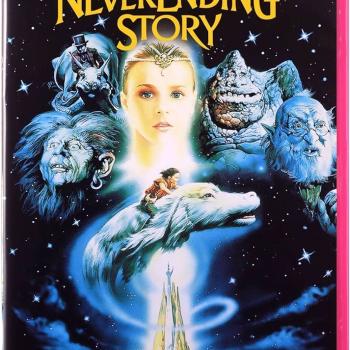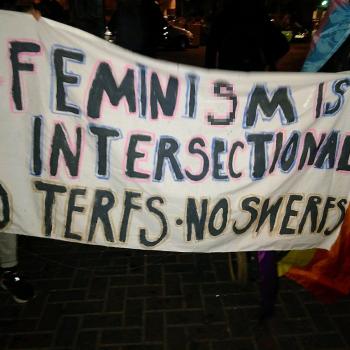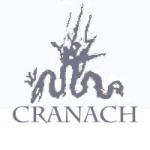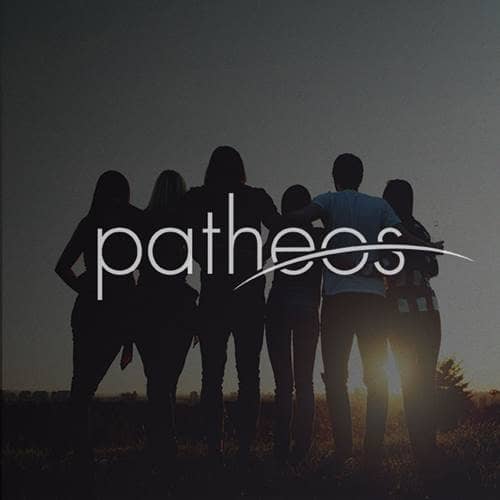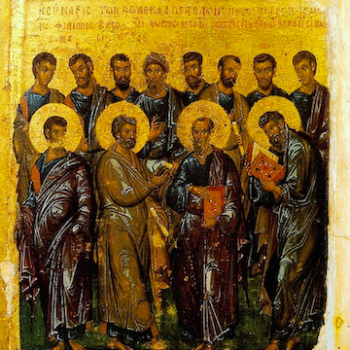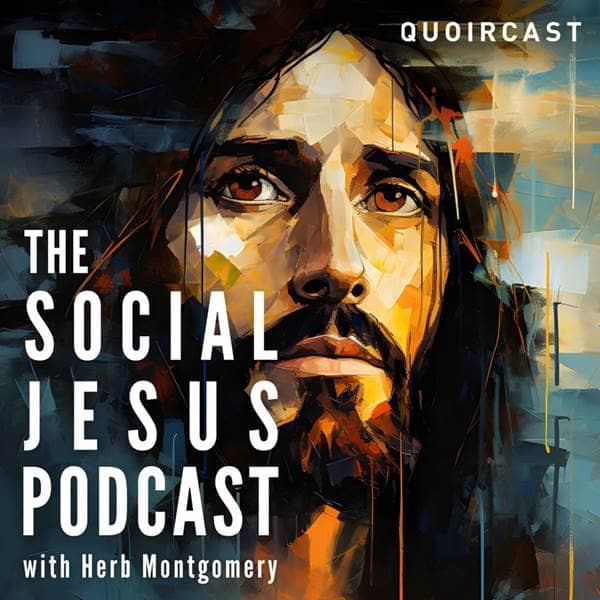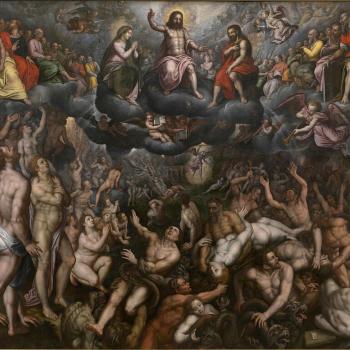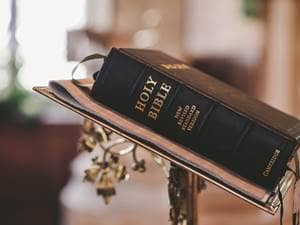
The answer to the question, "Are there books missing from the Bible?," really depends on who you ask. One really must answer that question with a question: "Which Bible?" The Roman Catholic biblical canon? The low-church Protestant Bible? The compilation of biblical books accepted by the Ethiopian Church? The answer really depends on what tradition's Bible you're referring to. Biblical scholar, Dr. James H. Charlesworth, explained.
"Mere perusal of the biblical books discloses that their authors depend upon sources that are no longer extant; Moreover, the assumption that all Christians have the same canon is further shattered by the recognition that the Copts and Ethiopians have added other documents to the canon. Even in America today there are different canons among the various Christian communions: for example, Protestants exclude from the canon the Apocrypha, the additional books in the Greek Old Testament; the Roman Catholics, following the edicts of the Council of Trent in 1546, include them as deuterocanonical. The Mormons, moreover, argue that more books belong in the canon, and that it should remain open. ; [James H. Charlesworth, ed., The Old Testament Pseudepigrapha, two volumes (New York: Doubleday, 1983-1985), 1:xxi & xxiv.]
In his article on canon (in The Anchor Bible Dictionary), Dr. James Sanders informs us: "When one uses the word 'Canon' one must specify to which denomination or community of faith it refers even within Judaism and Christianity." The point is, there are so many different Christian canons or compilations of the Bible; not simply different translations, but actual different lists of canonical books; that saying "this belongs" or "that's missing" isn't really a feasible task to undertake.
Development of the Biblical Canon
A very brief look at the development of the biblical canon might help in attempting to grasp how "sloppy" the whole canonization process was. So often, various denominations speak of the Bible as a production of God, in the sense that He controlled every element of a given book's receipt, recording, preservation, canonization, and circulation. In this view, there was no human component and no potential for error. Truth be told, were that the case, the caution expressed in the quotes above would be unnecessary.
Summarily speaking, the Pentateuch was canonized in its final form sometime between the 6th and 5th centuries BCE. The Prophetic books (such as Isaiah or Daniel) were formalized and canonized shortly after the Pentateuchh ;probably during the 4th and 3rd centuries BCE. The canonization process of the Writings & Wisdom Literature (like Ruth, Esther, Song of Solomon, etc.) did not begin until sometime between the 2nd and 1st centuries BCE; and some think it did not conclude until as late as the 2nd century CE. Why so late? Well, it has been argued that, since the Jewish people had prophets living among them, they likely felt no need to write these things down. That may or may not be the case. However, it is fair to say that it wasn't until Judaism's multiple captivities; during what is commonly called the "intertestamental period," when Judaism no longer had what we would call a "prophet" at its head; that we see the oral traditions of that faith being formally codified and canonized. Prior to that time, these were stories commonly told and perceived as authoritative; but with variant strains and unique versions circulating.
It wasn't until the 2nd century of the common era that Christians began to take a serious interest in determining a New Testament "canon" to be used alongside of the Septuagint (the Greek version of the Hebrew Bible, which was commonly used in the first century). Again, there are a couple of potential reasons why the late canonization of the Christians' holy books.
First, we must not forget that the Christians initially saw themselves as Jews who had found the Messiah. So, the Jewish canon was their canon; if they had a canon at all. In his book, The Formation of the Christian Bible (p.62), Hans Von Campenhausen argued: "Early Christianity is positively not to be regarded as a 'religion of the Book';" For New Testament Christians, to a great extent, the Hebrew Bible (or Old Testament) was mostly authoritative as a proof-text that Jesus was the long-awaited Messiah. However, since they saw Christ as fulfilling the law, the book was definitely seen as an "old" testament. And the use of the Old Testament by Jesus and His disciples makes it clear that Christians really did not see themselves as bound by, or under the authority of, the Hebrew Bible or its laws.
Second, when the first-century apostles were martyred, Christians began (for the first time) to see the value in collecting and writing down what had previously only been shared orally. In this sense, they were much like their counterparts in pre-Christian Judaism, only seeing the need to record and preserve prophetic utterance when the prophets had disappeared.
Third, many historians see the influence of the second-century heretic Marcion as motivating Christians to create a set of canonized books. By all accounts, Marcion was "one of the most influential heretics of the second century." His father was a bishop in the early Church, as was Marcion, but the latter of the two fell in with a Gnostic teacher who influenced his beliefs about Christianity. He believed the God of the Old Testament was not the "true God" but, rather, a wicked god that was ignorant and contradictory. Marcion believed that the Old Testament was good as literature but was doctrinally corrupt. So, he created what some have called "the first New Testament canon." It contained the Gospel of Luke and 10 of the epistles of Paul; each of which having been carefully edited to remove any quotes from the Old Testament. All of the other gospels and New Testament books Marcion believed were heavily corrupted by the Jewish Christians. Because his teachings and "canon" quickly gained in popularity, the mainstream Church very much needed to combat those&; and (according to many) this motivated the Church to consider more seriously the need to create its own "authorized" version of the New Testament.
By the 4th century, the Church had produced a new Christian "canon" from the documents they had been using as "authoritative" and sacred. However, as late as the early-6th century, there were still questions about which books were authoritative, which were potentially pseudepigraphic, and which documents belonged in the official canon of the Church.
There were a number of things that helped to determine the canonical worth of a given letter, epistle, or gospel. (1) The support of major figures within the Church. For example, Athanasius convinced people that John's Revelation should be canonized. Hilary, Ambrose and Jerome all fought to keep the book of Hebrews on the canonical list. (2) Popular use made a difference. The early Christians were severely persecuted. Thus, their scriptures were often confiscated and destroyed. In order to pacify their antagonists, Christians often had to surrender their scriptures. However, some Christians were said to hold back certain books; books they deemed most precious or most inspired; turning over to their persecutor's books they were willing to lose in order to preserve their lives. Thus, the popularity of a given book among the members of the various Christian congregations made a difference. (3) The status of the writers of a given document were also considered. In other words, if a text was authored by an Apostle, it carried more weight than a text that was not.
Several ecumenical councils did deal with defining the scope of the Church's canon; such as the Councils at Laodicea (363 AD), Hippo (393 AD), and Carthage (397 AD). However, no ecumenical council was ever called specifically for the sole purpose of determining the canon; which is really surprising, owing to how important scripture is in the life, doctrine, and preservation of the Church.
In the end, one can see why the process of creating the canon could leave the door open for a variety of Christian canons, such as we have today.
Apocrapha and Mentioned but Missing Books
All of that being said, there are some specific differences between which books certain denominations hold canonical but which others reject. These books are not "missing," per se, but are "absent" from various Bibles utilized by certain traditions.
First of all, there's the Apocrapha or Deuterocanonicals. These are books which are traditionally sandwiched between the Old and New Testaments (in Roman Catholic, Eastern Orthodox, and high-church protestant Bibles), but are much less common in low-church Protestant Bibles; and have been since at least since the 19th century. They include additions to the Old Testament books of Daniel and Esther, in addition to the books of 1 Esdras, 2 Esdras, 1 Maccabees, and 2 Maccabees, Baruch, Ecclesiasticus, Judith, the Letter of Jeremiah, the Prayer of Manasseh, Tobit, and the Wisdom of Solomon. These books would have appeared in the Septuagint (the Greek version of the Old Testament commonly used in Jesus's day) but would not have been included in Hebrew versions of the Old Testament of His day. Today, the vast majority of Christians (statistically speaking) have the Apocrapha as part of their tradition's canon.
Second, there are a number of books mentioned in the Bible which do not appear in most current biblical compilations. Examples of books referenced in the Old Testament, but not found therein, include The Book of the Covenant (Exodus 24:7); The Book of the Wars of the Lord (Numbers 21:14); The Book of Jasher (Joshua 10:13; 2 Samuel 1:18); The Book of Samuel (1 Samuel 10:25); The Acts of Solomon (1 Kings 11:41); The Book of Samuel the Seer (1 Chronicles 29:29); The Book of Nathan the Prophet (2 Chronicles 9:29); The Book of Shemaiah the Prophet (2 Chronicles 12:15); The Acts of Abijah (2 Chronicles 13:22); The Story of Eddo the Prophet (2 Chronicles 13:22); The Book of Jehu (2 Chronicles 20:34); The Sayings of the Seers (2 Chronicles 33:19); The Book of Enoch (Jude 1:14); The Book of Remembrance (Malachi 3:16). Like the Old Testament, the New also makes reference to scriptural texts that apparently were authoritative within the Church during the first century but are not in most Bibles today. As examples, the following Pauline epistles are referenced but absent from most printings of the New Testament: A third Pauline Epistle to the Corinthians (1 Corinthians 5:9); An additional Pauline Epistle to the Ephesians (Ephesians 3:3); Paul's Epistle from Laodicea (Colossians 4:16). Almost all of these books are "lost" or "missing," not just from biblical compilations but from the preserved records available to the world today
De-Canonized Books
We know that there were a number of books that were held in very high regard in the earliest years of the Christian movement. These texts were used like scripture by the early saints but then failed to make the cut (for various reasons) when the list of New Testament books was ultimately finalized in the 6th century. Thus, one scholar on the canon of the New Testament pointed out:
The canon which finally emerged contained only a fraction of the Christian literature that had been produced in the early period. Many other writings (gospels, acts, letters, and apocalypses) achieved wide currency and attained the status of scripture in some areas without in the end becoming canonical. So, for example, the Apocalypse of Peter and the Shepherd of Hermas were scarcely less popular than the Revelation to John in the 2nd century; the Gospel of Thomas and the Gospel of Peter were reckoned by some no less authoritative than any other gospel; the letters known as I Clement and Barnabas were esteemed and quoted as scripture by many; the Acts of Paul also was held in high regard in some areas.”
We know that certain early collections of sacred Christian writings contained some of the aforementioned documents, which are not in compilations of the New Testament today; collections such as the Italian Muratorian Canon (2nd-3rd Century AD), or Codex Sinaiticus (4th Century AD). Many of the aforementioned gospels, acts, letters and apocalypses had nearly canonical status and were used as much like scripture in those early years as any scriptural book is used today. And yet today, these various ancient texts are not only absent from traditional New Testament complications, they are largely unknown by practitioners of Christianity
Whether such texts should be considered "missing" from the Bible really depends on the degree to which one agrees with the canonization process and the decisions made to limit the New Testament to its current commonly accepted 27-books.
Sola Scriptura vs a "closed canon"
One other point worth considering in any discussion about the fixed limits of canon would be the principle of sola scriptura; or "scripture alone," as it is often translated. While most low-church protestant denominations argue that the Bible is complete and that nothing, but the Bible, is needed (or authorized) to guide Christians living in the post-modern era; Catholics and Eastern Orthodox Christians, on the other hand,, tend to see this approach as too narrow.
The world canon means "measuring rod" or "measuring stick" and implies that which is authorized to judge a doctrine or practice as "right," "orthodoxy," or "true." While many low-church protestants only use the Bible; and primarily the New Testament; as the standard or "measuring rod" to determine what is true, right or orthodox, in addition to the Bible, most in the high-church Christian traditions rely on the councils of the Church, the teachings of the early church fathers, and any long-standing traditions of the Church, as canon; as a guide of what is right for the Church; in theology, but also in practice. Thus, while not directly responding to the question of whether there are "missing" biblical books, the notion of canon which goes beyond the 27 New Testament books is actually accepted by most Christians world-wide. Thus, these additional standards for orthodoxy may be "missing" from the biblical text itself; nevertheless, they are had in other forms and other places in most of the Christian world; thereby extending the parameters of the canon to well beyond the traditional 66 books found in most Old and New Testaments.
So, Are There Books Missing?
The short answer is probably "Yes." The longer answer is that many of those "missing" books (e.g., the Apocrypha/Deuterocanonicals or early Christian texts that didn't make the cut) are widely available today outside of certain canons or have been lost in their entirety (like the more than a dozen books mentioned by name in the Hebrew Bible, but no longer extant). These missing books are not "gone" because of some conspiracy to "hide the truth" or cover some esoteric early Christian teaching. Rather, they have been lost because of the human side of the canonization process, where individuals; not claiming a biblical prophetic calling; had to make hard decisions for the Church. Of necessity, those decisions included trying to ascertain what books then had and held sacred rose to the level of authoritative scripture and which did not. Did they get it right? Well, again, it really depends on who you ask!
5/14/2024 8:27:22 PM


